Are you excited about learning what is On-Page Search Engine Optimization? Well, On-page search engine optimization (SEO) is a sort of search engine optimization (SEO) that improves the ranking of individual pages within a website in order to make them more relevant to search results. Each page’s content as well as its source code will be optimized as part of this process. On-page SEO tactics that are fundamental include the creation of high-quality content, the incorporation of keywords, and the enhancement of page speed.
Today, on-page SEO checklist involves clever keyword targeting in critical areas while maintaining user experience. This signifies your content reads well and meets user needs.
A Content Management System (CMS) lets non-technical people update it. Time is allocated between upfront and continuing chores. Targeting keywords in critical parts should be easy with best CMS Platforms like WordPress. Images, headings, body copy, meta description tags, and title tags are included. We will exam-in On-Page SEO Checklist in detail today.
SEOptimer, SEO SiteCheckup, and MozBar are free SEO tools that can analyze a web page's HTML and identify key on-page elements to swiftly verify for optimization.
Pro Tip
Within the following blog, we will discuss various On-Page SEO Checklist in deep!
However, before we get into it, let’s first discuss the distinction between on-page SEO and off-page SEO:
On-page Vs Off-page SEO
The term “on-page SEO” refers to any action that may be taken on a webpage (or within an organization) to boost your rankings.
The term “off-page SEO” refers to any elements that can be optimized outside of your website (sometimes known as “externally”) in an effort to improve your rankings. Backlinks are often considered to be the most important off-page SEO component. Public relations and social media are two further examples.
Both are essential elements that form the basis of any effective SEO strategy.
What is On-Page search engine optimization
On-page SEO optimizes your website's front-end and back-end to rank in search engines and attract new visitors. Content, site architecture, and HTML are on-page SEO components.
On-page SEO, off-page SEO, and technical SEO are the three primary elements that guide the ranking of your website by the algorithm used by Google:
Search engine optimization (SEO) on a page refers to the features of a page that allow search engines to crawl and index the page.
Off-page search engine optimization encompasses a wide range of activities, including social sharing, external linking, and more.
The more technical aspects of search engine optimization are referred to as technical SEO. This includes all of the SEO elements that are not included in on-page SEO Checklist and off-page SEO checklist, such as structured data, site speed, and mobile compatibility.
What is the significance of on-page SEO?
Search engine optimization (SEO) that focuses on individual pages is vital since it tells Google what your site is all about and demonstrates how you help people. It makes sure that search engine bots and people alike will find your site optimal.
In order to rank higher and attract new traffic, search engine optimization (SEO) is more important than just publishing and constructing your website.
The improvements you implement for on-page SEO are called “on-page” because they are visible to visitors on the page itself, in contrast to off-page and technical SEO aspects, which aren’t always obvious.
Since you have complete control over all on-page optimization techniques, it is crucial that you acquire them correctly. The factors Or techniques of on-page SEO will be discussed next.
On-Page SEO Elements to focus:
In order to enhance your ranks and surpass your competition, it is crucial to optimize various on-page SEO factors. These are the 12 crucial On-Page optimization techniques:
- Keywords
- Content
- Title Tag
- Meta Description
- URLs
- Header tags
- Alternative tags
- The topics covered in this text are content,
- Images
- Internal linking
- Schema markup
- Optimization of page speed
- Responsiveness
Keyword Research
Search engine optimization (SEO) relies on keyword research to uncover and analyze search terms and phrases used to find information, products, and services online. Find keywords that will provide focused traffic to your website. Below is a full description of keyword research:
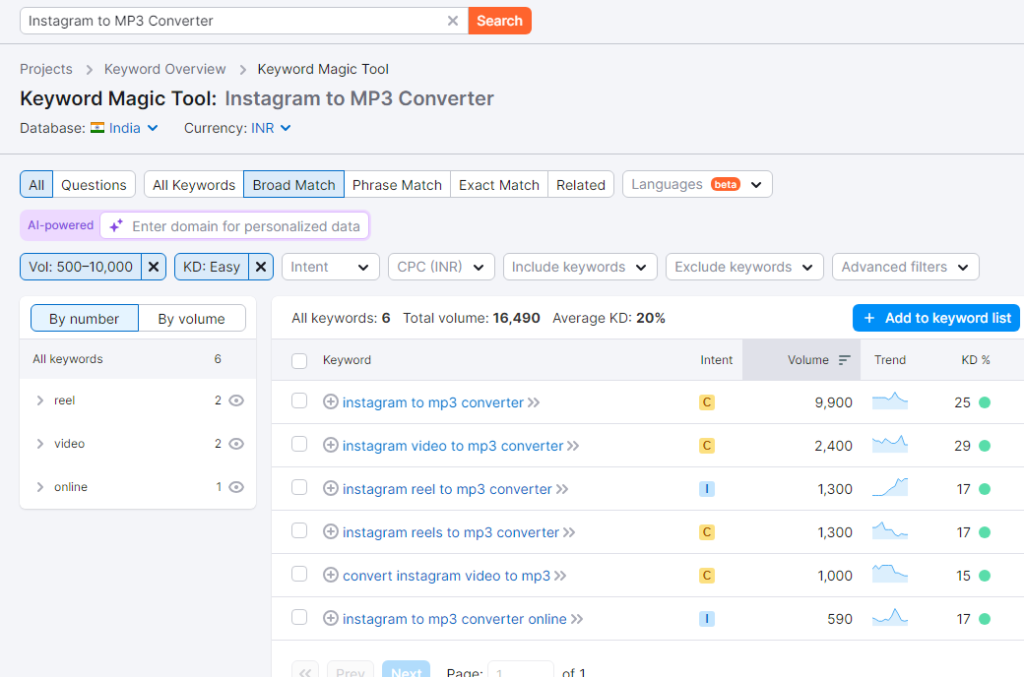
The Goal of Keyword Research
Understanding User Intent: Learn what and why your audience searches.
Content Optimization: Help create and optimize audience-relevant content.
Competitor Research: Identify competitors’ ranking keywords and find ways to outperform them.
Keyword Research: Select keywords to boost your search engine ranks and visibility.
Different Categories of Keywords
Short-tail keyword: “Instagram” is an example of a short-tail keyword, which refers to broad and general search keywords.
Long-tail keywords: The term “long-tail keywords” refers to terms that are more specific and have a lower search volume but a greater purpose (for example, “Instagram to MP3 Converter”).
LSI keywords: Latent Semantic Indexing keywords, also known as LSI keywords, are related terms that provide more context to the content you have.
Write Helpful Content
When it comes to on-page search engine optimization (SEO), one of the most crucial measures you should take is to develop high-quality content that corresponds to the search intent of your users.
To begin, conduct keyword research in order to identify themes that are pertinent and keywords that are targeted.
To illustrate this point, You can make use of the Keyword Magic Tool of SEMrush.
Title Tags
This is the page title that is displayed in the search engine results page (SERP). What your page is about should be communicated to Google using this. Additionally, encourage users to click through.
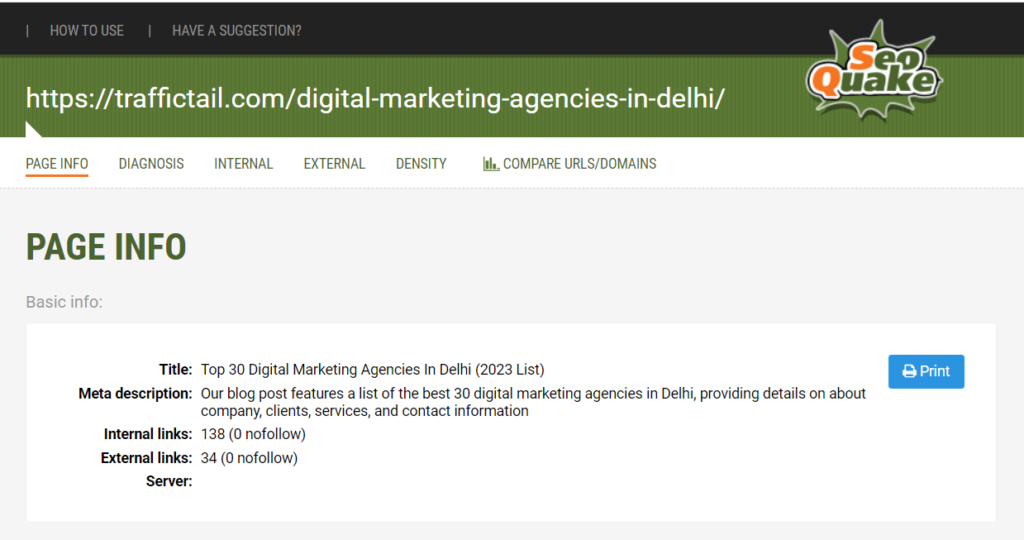
To achieve on-page search engine optimization, it is of the utmost importance to craft an effective title tag. Begin by positioning the principal term, which is your primary objective for ranking, in a strategic manner, preferably near the beginning of the list. It is possible to supplement it with secondary keywords in order to increase its relevancy.
However, you should avoid overusing keywords; instead, you should strive for a natural flow that is in harmony with Google’s algorithms and the user experience. This will help you prevent any appearance of spammy “keyword stuffing.”
In addition, the length of the title tag should be between fifty and sixty characters (including spaces).
Meta Description
Despite the fact that the meta description does not have an immediate influence on rankings, it is an essential part of on-page optimization practices. On the search engine results page (SERP), it acts as your pitch, luring readers to go through to your website and thereby attracting their attention.
Make an intelligent use of this space to express in a concise manner what your website has to offer and why it is worth exploring, while adding your major keyword to ensure that it is relevant.
It is important to keep in mind that Google frequently highlights the search queries of consumers within the meta descriptions, which might potentially make your listing more appealing.

Your meta descriptions should adhere to a restriction of 120 characters (including spaces) in order to avoid being truncated in search engine results pages (SERPs) on desktop computers as well as mobile devices.
In this way, your message will continue to be succinct while yet having an impact.
Pro Tip: You should also make use of tools like as Semrush's On Page SEO Checker in order to confirm the inclusion of keywords, uncover instances of keyword stuffing, and determine whether or not Google is modifying your description through search results.
URLs - Write short descriptive URL
Ensure that your page URLs are easily understandable for both human readers and search engine crawlers. They play a crucial role in maintaining a coherent site structure, particularly as you expand with subpages, blog posts, and other internal content.
Be brief, clear, and descriptive when writing URL slugs. Note these important tips:
Include your main keyword: Place your page’s main keyword in the URL slug for relevancy.

Use hyphens (“-“) to separate words in URL slugs for readability and SEO.
Avoid time-sensitive references: Avoid URL slugs with years or dates to preserve longevity and relevancy.
If you change the URL slug, redirect from the old version to retain SEO equity and user experience.
Header tags - Use H1, H2 & H3 smartly
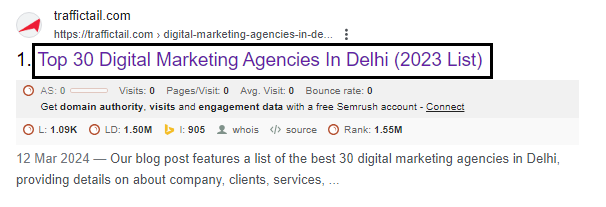
By utilizing header tags in the organization of your material, you may improve its readability and make it more relevant to search engines. Incorporate pertinent keywords into your headers in a natural way, choosing keywords that are distinct from those that are included in the title of your page.
In order to underline the significance and relevance of your major keywords, you should save them for the <h1> and <h2> headers specifically.
This is not only beneficial to search engine optimization (SEO), but it also makes your material simpler to scan and understand for both users and search engines.
Alternative tags
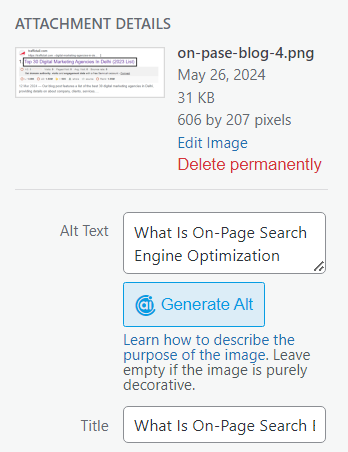
Must learn how to optimize your visual content with alt text for images. You can improve your page’s search engine optimization and increase its visibility in image search results, like carousels and search engine results pages, by adding your keyword to the alt text of your images. Keep these guidelines in mind when you add alt text to images:
Be certain that the alternative language you use to describe images is both descriptive and particular so that people with visual impairments can still benefit from them.
Maintain consistency and relevancy by aligning the alt text with the broader content of the page.
To keep things brief and prevent truncation, make sure the alt text doesn’t exceed 125 characters.
Use keywords sparingly and naturally; while they are useful, you don’t want to come across as keyword stuffing.
The topics covered in this text are content
In the context of an on-page SEO checklist, the phrase “the topics covered in this text are content” often refers to the discussion or guidelines that are associated with optimizing the content of a webpage.
This includes features such as the creation of content that is of high quality, relevant, and engaging; the optimization of keywords within the content; the guarantee of proper formatting using header tags; and the incorporation of multimedia elements such as photographs with optimized alt text.
When it comes to enhancing search engine visibility, user experience, and overall on-page SEO performance, using content optimization that is effective is absolutely necessary.
Images
On-page search engine optimization (SEO) places a large emphasis on visual material, which includes photos, graphics, and charts, for a number of different reasons. When images are added to web pages, they improve their visual appeal, which in turn increases user engagement.
In addition, optimizing photos with meaningful alt tags (which will be discussed upon further down) can efficiently drive traffic from image search results. To add insult to injury, on-page search engine optimization (SEO) relies heavily on HTML elements, which are the many components that are contained within the source code of a webpage.
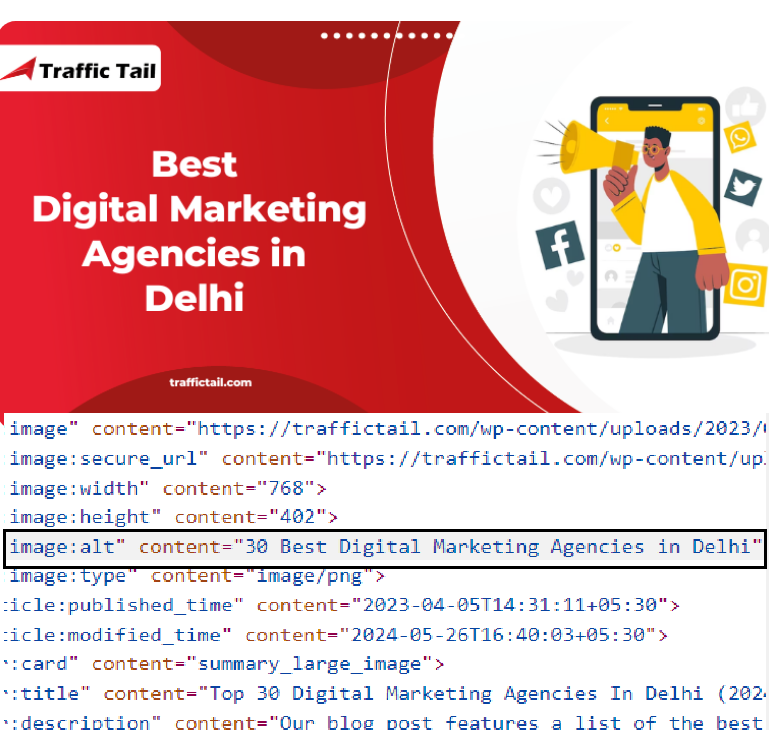
You may access the source code for any page in your browser by going to the top menu and selecting View > Developer > View Source.
Internal linking
Internal linking refers to linking to other useful sites on your website. (See how “internal linking” links to another HubSpot blog article above?

An example, Internal linking helps on-page SEO techniques work by sending users to other pages on your website, keeping them longer and telling Google your site is useful. Google has more time to crawl and index your website pages as users stay longer. This helps Google learn more about your website and rank it higher.
Schema markup
Schema markup helps search engines understand webpage content. It powers many rich snippets in Google search results, which boost click-through rates. Search Google for your major goal keyword and look for rich results among the top-ranked pages to see if schema markup is advantageous. Schema markup is likely beneficial if many results have rich snippets.

Yoast and RankMath make schema markup easy for WordPress users. Merkle’s Schema Markup Generator may generate JSON-LD code for manual upload to your website. This organizes your material for search engine visibility and relevance.
Optimization of page speed
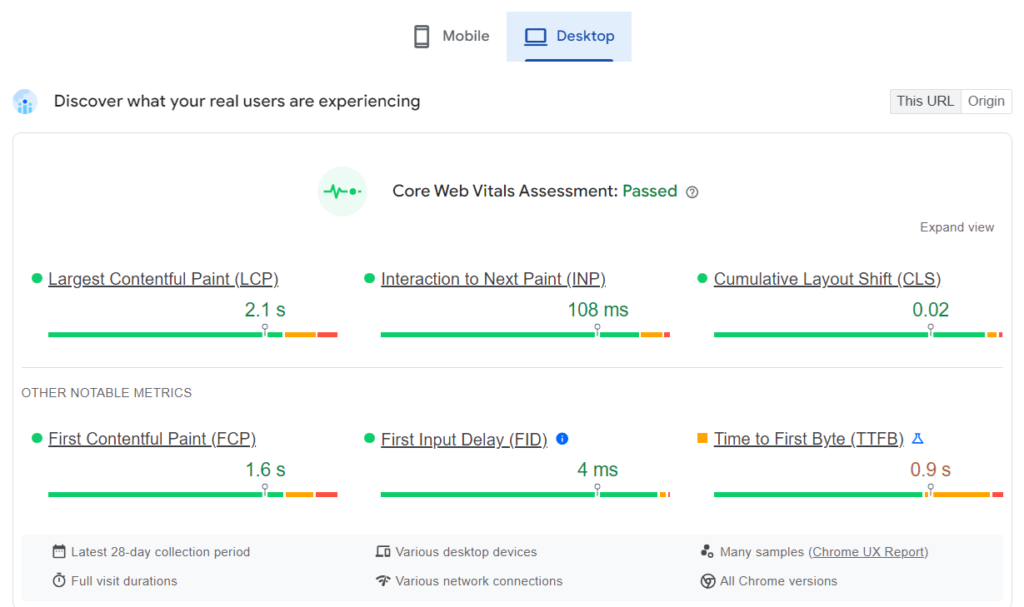
On-page SEO factors depends on page speed optimization, which affects user experience and rankings. Reduce load times by reducing HTTP requests, compressing, and optimizing pictures. Reduce server response times, cache, and minify CSS, JavaScript, and HTML.
Remove render-blocking resources and prioritize above-the-fold content. Google PageSpeed Insights can optimize mobile performance and track performance. Improve page speed with these tactics to boost SEO and give users a faster, better browsing experience.
Responsiveness
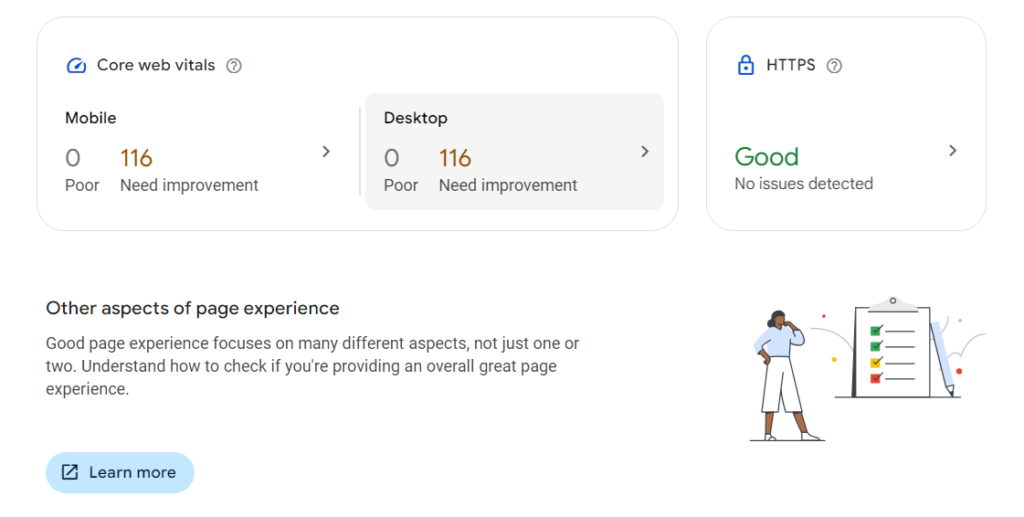
Even in desktop searches, Google promotes mobile-friendly websites. Mobile responsiveness matters. A mobile-friendly website hosting service, design theme, and content arrangement are essential. Ensure small-screen readability and navigation.
Use Google’s Mobile-Friendly Test to evaluate your site’s mobile friendliness. Optimizing for mobile devices meets Google’s criteria and improves user experience across all devices, increasing exposure and engagement.
Final Words
Increasing the visibility of a website and the quality of the user experience are both significantly aided by on-page search engine optimization. It is possible for websites to improve their search engine results by increasing the quality of essential parts such as title tags, meta descriptions, header tags, and picture alt text.
Making page speed, mobile responsiveness, and quality content your top priorities will ensure that your online presence remains relevant and engaging over time. Through the use of these methods, organic traffic is generated, and digital marketing objectives are effectively accomplished.
I want to hear from you before you start the checklist. What’s your thoughts on today’s post?
Maybe you have a reading question.
Leave a comment below.
FAQs
What is on-page search engine optimization?
On-page search engine optimization Or On-Page SEO Techniques involves optimizing individual web pages to enhance their search engine rankings and attract greater organic traffic. I focus on enhancing the content, meta tags, images, and other page elements to increase their relevance and value to search engines.
Why is on-page search engine optimization important?
On-page search engine optimization plays a crucial role in enhancing the visibility and ranking of a website. It involves optimizing various elements on a webpage to make it more search engine-friendly.
focusing on on-page SEO, website owners can improve their chances of attracting organic traffic and reaching a wider audience.
How can I improve on-page search engine optimization?
To enhance on-page search engine optimization, one can begin by conducting thorough keyword research to identify the most relevant keywords for their content.
Then, enhance your title tags, meta descriptions, headings, and content with these specific terms.
Furthermore, it is important to ensure that your website is optimized for mobile devices, loads efficiently, and has a well-organized site architecture.
What are some best practices for on-page search engine optimization?
For optimal on-page search engine optimization, it is crucial to develop top-notch, pertinent content that is finely tuned to your desired keywords. Ensure your title tags and meta descriptions are informative and contain relevant keywords.
Additionally, make use of headings and subheadings to effectively structure your content.
Tt is important to optimize your images by adding alt text and ensuring that your website is designed to be user-friendly and easy to navigate.



